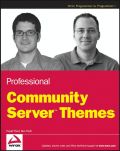
The open source alternative: understanding risks and leveraging opportunities
Meeker, Heather J.
INDICE: Chapter 1. Introduction: How UNIX Gave Birth to Linux, and a New Software Paradigm. In the Beginning Was the Word, and the Word was UNIX. Along Comes Linux. Now, What is Open Source? And This Is Just the Beginning Chapter 2. Free Software and Open Source. Viruses and Freedoms. Philosophy of Free Software. Open Source Initiative (OSI). The Mozilla Foundation. Linus Torvalds. Free Software Definition and Open Source Definition. What's in a Name? The Viraland the Non-Viral. The Open Source Development Model. Chapter 3. Common Open Source Licenses and their Structure. Direct Licensing. GPL. GPL + Exception (or Special Exception). GPL + FLOSS Exception. Lesser General Public License (LGPL). Corporate Hereditary Software Licenses. Other Hereditary Software Licenses. Permissive Licenses. Apache 1.0. Apache 1.1. Apache 2.0. The Artistic License. Miscellaneous Licenses. Non-Software Licenses. Chapter 4. Due Diligence, License Proliferation and Compatibility. What is the Problem with Combining Software? What is Due Diligence? License Conditions and Diligence Problems. License Compatibility. Choices in an Incompatible World. An Embarrassment of Riches? Reusability. Chapter 5. Audits and Compliance Initiatives. Provenance and Objective Checking. Applying Policy and Legal Review. Some Nuts and Bolts. Chapter 6. Notice Requirements. Chapter 7. Patents and open source. The Patent Debate. Patent Portfolio Management. Chapter 8. Trademarks and open source. Trademark Law and Open Source Licensing. Trademarks in the Open Source World. AT&T UNIX Battle. Chapter 9. Open Source and Open Standards. Chapter 10. Developing a Corporate Open Source Policy. Appendix 10.1. Open Source Corporate Policy. Chapter 11. Open Source Code Releases. Choosing a License. Effect on Patent Portfolio. Effect on Trademarks. Open Source Business Models. Dual Licensing. The‘Ur-Licensor’ and Open Source Decision Models. Contribution Agreements. Re-issuing Code. Corporate Organization. Appendix 11.1. Open Source Trademark Policy. Chapter 12. Technical Background: Operating System Kernels, User Space, andElements of Programming. What is an Application? What is an Operating System Kernel? Dynamic and Static Linking, and Inline Code. Header Files. Monoliths and LKMs. Chapter 13. Enforcement of open source licenses. Past Enforcement. Enforcement Obstacles. Lack of track record: The GPL has never been tested in court. Waiver/Estoppel: The occasional and selective enforcement of the GPL means it is unenforceable. Formation: The GPL is not validly accepted by licensees. The GPL constitutes copyright misuse. Joint work arguments. Standing and Joinder arguments. Chapter 14. The Border Dispute of GPL2. Defining the Border Dispute. What the GPL Says. Rules of Contract Construction. Applying the Four Corners Rule to GPL2. Applying the Rules of Contract Construction to GPL2. TradeUsage and Other Extrinsic Evidence. The Derivative Works Question. The Facts.Legal Rules. Analyzing the Case of Two Works. Is the Result One or Two Works?Policy Arguments. Non-U.S. Law Interpretations. The Approach of Legal Realism. Outside the Four Corners. Loadable Kernel Modules (LKMs). The Hardest Cases.LGPL Compliance. Chapter 15. License or Contract? Contract Formation. Arguments Supporting Formation. Implications of Absence of Contract Formation. Incentives for Formation Arguments. Chapter 16. Defining Distribution. Chapter 17. Open Source in M&A and Other Transactions. Open Source in Licensing and Commercial Transactions. Development Agreements. Chapter 18. GPL Version 3.0 (GPL3). What is the Effect of the Release of GPL3? Adoption of GPL3. Politics and Context. The ‘Derivative Works’ Problem. ‘Propagation’ and ‘Conveying’. Patents. DMCA Provisions. The ‘Java Problem’. Disabling and Obfuscation. The ASP Problem. License Compatibility. Chapter 19. LGPL Version 3.0 (LGPL3). A New Approach for LGPL. Adoption of LGPL3. Politics and Context. Definitions. Compliance. Drawbacks. Appendix A. Open Source Development Agreement.
- ISBN: 978-0-470-19495-9
- Editorial: John Wiley & Sons
- Encuadernacion: Cartoné
- Páginas: 304
- Fecha Publicación: 20/02/2008
- Nº Volúmenes: 1
- Idioma: Inglés
